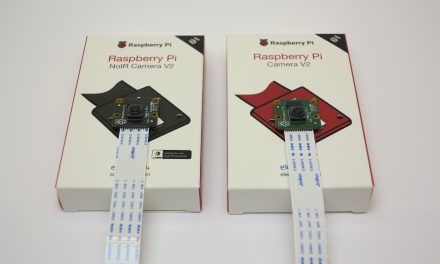For the setup of my differential GPS solution with two RasPiGNSS “Aldebaran” modules I need appropriate GPS antennas. These antennas are not classic GPS mice with USB connection but high-quality receiver modules, i.e. antennas that can only receive the GPS signal. For the base station and for the robot car one antenna each is required. On recommendation of www.drfasching.at
I bought the antenna model “Tallysman™ TW-2410” for the base station and the model “Tallysman™ TW-4421” for the robot car. With these two antennas the construction of the base station and the robot should harmonize very well and GPS positioning should be possible very well and fast.
The picture shows both models from Tallysman™. The slightly larger antenna on the right is the Tallysman™ TW-2410.
The somewhat more expensive Tallysman™ TW-2410 GNSS antenna covers the frequency bands GPS L1, GLONASS G1 and SBAS (WAAS, EGNOS & MSAS). This antenna is very well suited for Precise Point Positioning (PPP) applications as the size of the antenna with 57 mm guarantees a very good reception. The smaller and also cheaper antenna Tallysman™ TW-4421 on the other hand is installed on the robot car. It is very well suited for operation in urban areas with e.g. reflections from houses and trees. The construction is always based on the assumption that the base station has a clear view of the sky and that this view is not negatively influenced by tall buildings or trees.
I received the RasPiGNSS “Aldebaran” GPS modules, the respective antennas and the corresponding advice from www.drfasching.at.
Technical data:
I got the technical data of the GPS antennas from the official Tallysman™ TW2410/TW2412 website:
Mechanical:
| Architecture: | Dual, quadrature feeds |
| Size: | 57 mm dia x 15mm H |
| Weight: | 150g |
| Enclosure: | Radome: ASA Plastic, Base: Zamack white metal |
| Attachment Method: | Magnetic w/pre-tapped 4 x 6-32 UNC |
| Environmental: | IP67, REACH, and RoHS compliant |
Electrical:
| LNA Gain: | 28 dB |
| Supply Current: | 15 mA typ, 25mA Q maz (85C) |
| Supply Voltage: | 2.5 to 16 VDC nominal (12VDC recommended max.) |
| Noise: | 1 dB typ. |
| Axial Ratio at Zenith for both L1 and G1: | <1 dB |
The detailed technical data of the antennas are available at Tallysman™ by clicking on the following link.
Antenna connection:
For this purpose, these are simply screwed onto the external connection. With the 3 m long cable it is then possible to install the antenna far away from the base station. On the robot car itself, the cable length may be a bit too long. But since I might want to use the antennas in the car or with a known one on the tractor I thought the long cable would not hurt.
Conclusion:
The antennas make a very good and stable impression. They can be easily and safely connected to the RasPiGNSS module. The antennas themselves comply with protection class IP67 and can therefore be mounted outdoors. I am also very pleased with the reception performance. For the Raspberry Pi and the other electronics I found a waterproof case at IKEA. I have converted a cheap 6,- € snack box from plastic. The Raspberry Pi, the GPS module and the battery fit into this box very well.
Article list - GPS module RasPiGNSS:
Precise GPS GNSS positioning with a Raspberry Pi and the RTKLIB – introductionPrecise GPS GNSS positioning with a Raspberry Pi and the RTKLIB – theoretical setup
Precise GPS GNSS positioning with a Raspberry Pi and the RTKLIB – GPS antenna setup
Precise GPS GNSS positioning with a Raspberry Pi and the RTKLIB – software installation
Precise GPS GNSS positioning with a Raspberry Pi and the RTKLIB – configuration RTKLIB base station
Precise GPS GNSS positioning with a Raspberry Pi and the RTKLIB – configuration RTKLIB mobile unit
Precise GPS GNSS positioning with a Raspberry Pi and the RTKLIB – XBee serial data transmission











Hi, i saw your youtube movie : Raspberry Pi – self-driving robot buggy
are you doing private project? i want something like you did,
please let em know if you can build me, and what is the cost
thanks
David
Hi David,
I only build robots for myself I do not sell them.
Ingmar